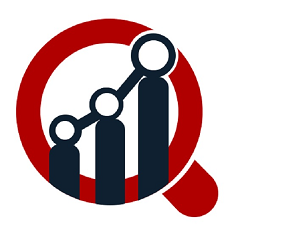Polyvinyl Chloride, widely known as PVC, is one of the most versatile and widely used thermoplastic materials in the world. It plays an important role in construction, automotive, electrical, packaging, and consumer goods industries. However, PVC in its pure form is brittle and not always suitable for end-use applications. To enhance its performance, additives such as stabilizers, lubricants, plasticizers, fillers, and pigments are incorporated—creating what is known as a PVC compound.
PVC compounds can be rigid or flexible, depending on the formulation, and they are tailored to meet the specific requirements of different industries. In this blog, we’ll explore what PVC compounds are, their types, advantages, key applications, and the future outlook of this market.
Types of PVC Compounds
PVC compounds are broadly classified into two categories:
-
Rigid PVC Compound (uPVC)
-
Contains little to no plasticizers.
-
Provides strength, dimensional stability, and resistance to weathering.
-
Commonly used in pipes, fittings, profiles, and window frames.
-
-
Flexible PVC Compound (Plasticized PVC)
-
Contains plasticizers that improve flexibility and softness.
-
Resistant to abrasion and chemicals.
-
Extensively used in cables, flooring, medical tubing, and artificial leather.
-
In addition, specialty PVC compounds are developed with flame-retardant, food-grade, or medical-grade properties to meet niche demands.
Advantages of PVC Compounds
PVC compounds offer several unique benefits compared to other polymers:
-
Durability: Excellent resistance to weathering, chemicals, and abrasion.
-
Cost-Effectiveness: Affordable compared to alternatives like polyethylene, polypropylene, or rubber.
-
Lightweight: Easy to transport and install in construction and automotive sectors.
-
Flame Retardant: Naturally self-extinguishing, making it safer for electrical and building applications.
-
Design Flexibility: Can be made rigid, semi-rigid, or flexible depending on the formulation.
-
Recyclability: PVC can be recycled, supporting circular economy initiatives.
These advantages explain why PVC compounds are widely adopted across multiple industries.
Key Applications of PVC Compounds
1. Construction Industry
Construction accounts for the largest share of PVC compound consumption. Rigid PVC compounds are used for:
-
Pipes and fittings
-
Window and door profiles
-
Roofing membranes
-
Flooring materials
PVC’s resistance to moisture, chemicals, and impact makes it ideal for long-lasting building solutions.
2. Automotive Sector
Flexible PVC compounds are used in car interiors, wiring harnesses, underbody coatings, and seat coverings. They provide durability, comfort, and fire resistance while being cost-effective.
3. Electrical and Electronics
PVC compounds are one of the most widely used materials for insulation and sheathing of electrical cables. Their flame-retardant nature, dielectric strength, and flexibility make them highly reliable for power cables, communication wires, and industrial wiring.
4. Medical Applications
Medical-grade PVC compounds are used to manufacture tubing, IV bags, blood bags, and masks. These compounds are designed to be biocompatible, sterilizable, and safe for use in healthcare environments.
5. Consumer Goods
PVC compounds are used in footwear, synthetic leather, toys, packaging films, and household items. Their ability to mimic natural materials while being durable and cost-effective drives their demand in consumer markets.
Sustainability and Recycling of PVC Compounds
Sustainability is a growing concern in the plastics industry, and PVC has faced criticism due to the use of certain additives and disposal challenges. However, significant progress is being made:
-
Recyclable Solutions: PVC can be mechanically recycled into pipes, flooring, and profiles.
-
Green Additives: Bio-based plasticizers and stabilizers are being introduced to reduce environmental impact.
-
Energy Efficiency: PVC production consumes less energy compared to other polymers, making it more resource-efficient.
With circular economy initiatives gaining momentum, the recycling and reuse of PVC compounds will continue to expand, making them a more sustainable material choice.
Market Outlook for PVC Compounds
The global PVC compound market is projected to grow steadily in the coming years, driven by:
-
Infrastructure Development: Expanding construction activities in Asia-Pacific, the Middle East, and Africa.
-
Urbanization: Increased demand for housing, water supply systems, and sanitation.
-
Electrification: Rising investments in renewable energy, smart grids, and telecom networks.
-
Healthcare Demand: Growing use of medical-grade PVC in devices and consumables.
-
Automotive Innovations: Lightweight and durable materials for electric vehicles and interiors.
Additionally, government regulations promoting safe and sustainable materials are encouraging the adoption of eco-friendly PVC formulations.
PVC compounds represent one of the most adaptable materials available today. From rigid structural applications in construction to flexible, soft-touch products in medical and consumer goods, their versatility is unmatched. With advancements in additive technology and growing emphasis on recyclability, PVC compounds are evolving into a more sustainable material that continues to shape modern industries.



